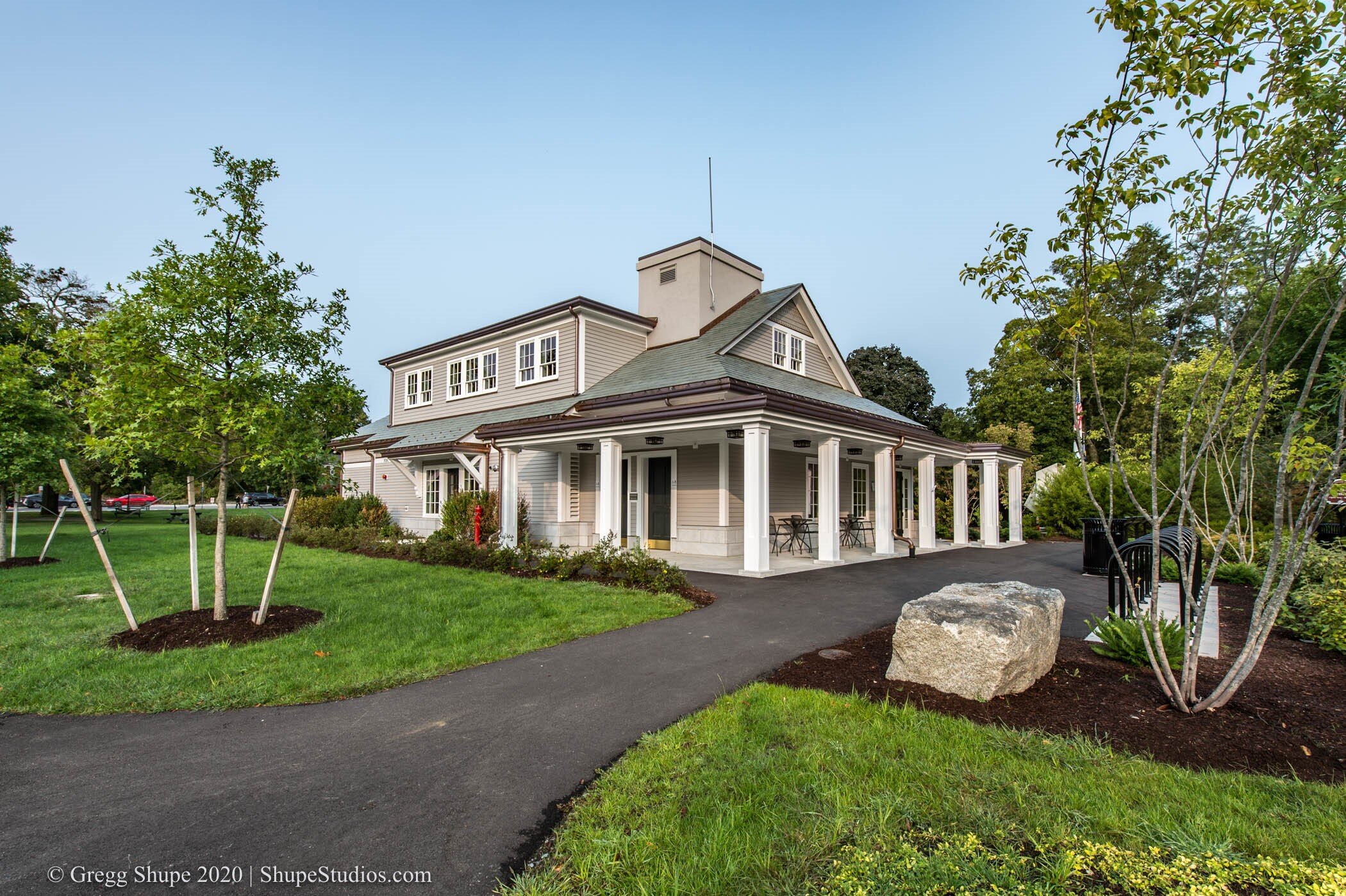One of the most important aspects of photography is lighting. It is true both indoors and outdoors but has particular application for architectural photography. When shooting a building most property managers assume the photographer will come out on a nice day, set up, take pictures and that is the end of it. Not quite. A commonly overlooked fact is that during the course of a day light shifts around a building and therefore to do it right so must the photographer.
Some shoot all sides of a building at the same time but there is a big downside. Photographing all sides at once means one side may look great but the rest can be sub-par. Take an east/west facing building – a morning shot of the front will be bathed in light but leaves the back in shadows. Retouching and Photoshopping can help but the presence of distinct shadows will limit the degree of effectiveness. The bottom line is that shots taken at the right time will look the most authentic and be the most visually impactful. The only effective solution is for the photographer to shoot a building at different times of the day to capture optimal sunlight on each side.
Case Study
Let’s take a look at a recent shoot – the new Lexington Visitors Center. I photographed the building at three different times to capture the best light for my client.
Morning – Back
The first series of shots were taken early morning to capture this side of the building in full sunlight.
Afternoon – front
I returned in the afternoon to capture the west facing front of the building in full sunlight (during the morning shoot this side of the building was dark and in shadow)
Evening – Magic Hour
I then returned a third time, in the evening, just after sunset to capture an additional lighting scenario – the time of day photographers refer to as “magic hour” where you have the perfect mix of ambient and artificial light.
Interiors
Yes, time of day definitely matters with interior shots. A staged interior is best shot with photographer lighting to draw your eye toward the staging and room architecture. Conversely an empty or sparsely furnished room can benefit from strong sunlight to create “window graphics” on the empty floor. You can see an example below in the Visitors Center. The light pattern on the floor clearly adds interest and helps to fill the room. I had to be there at exactly the right time to capture the incoming light and place the window graphic where I wanted it on the floor. Think about that same picture without the window graphic – it would look flat and empty.
Surrounding Structures
We don’t tend to think about surrounding structures or trees until we set out to photograph a building then realize they are stealing its light. We need to factor not only the sun’s position in the sky but also where and when shadows fall onto our subject building. Not too long ago I was asked to photograph Old City Hall in Boston. A commanding structure when it was built it is now dwarfed by much taller office buildings making the shot difficult as it falls in their shadows. In this case pre-shoot planning was critical as I had to observe the interplay of light and shadows throughout the day before I could determine an optimal time for the shoot.
In some urban environments or situations such as time of year you need go to plan B – recognizing a daylight shot may not be your best option. In that case a twilight “magic hour” solution may be the best option. This can also be a good solution when, in the case of office buildings for example, you want them looking occupied. Later in the fall and particularly with the arrival of daylight savings time buildings are fully occupied at twilight (with current COVID exceptions) and all the lights are on. This can make for a great photo.
Light it Right
Shooting each aspect of a building in the correct light is imperative for quality architectural photography. That may mean coming back to the shoot different times throughout the day – or even on different days because of Mother Nature’s fickleness.
Preplanning is a critical element – it is important to scout the location for time of day, presence of surrounding structures and planning for contingencies. Also consider time of year and leave time in your due dates for potential weather delays.
When you are considering architectural photography make sure you remember that as light shifts around a building so must the photographer. (At Shupe Studios we gang our hours to enable this benefit in every project we undertake.)
Impressive pictures of your property are integral to successful marketing. Attention to detail, planning, and proper lighting pay big dividends. A myriad of things go into successful photography but when you think about architectural photography don’t forget rule number one - light it right.







